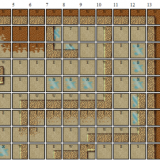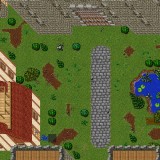Node JS Tutorial: How To Create A Simple Server
This will allow you to quickly setup a working node server in just a few easy steps.
1. Install Node.js
For Windows/Linux
Go to http://nodejs.org and download the
latest version of node for the operating system you want to install it on.
Open node and test if it’s working by typing 2+2 and hitting enter.
For Mac OS X
Visit Homebrew and then open your
command line and run (If you’re prompted to install command line tools go ahead and do that). :
ruby -e "$(curl -fsSL https://raw.github.com/Homebrew/homebrew/go/install)"
When that’s done run you can make sure your install was successful by running:
brew doctor
Then it’s a good idea run this to make sure you have the most up to date copy:
brew update
Then install node by running:
brew install node
Test your install by opening a command line and typing this to see the node version:
node -v
2. Install NPM
This package will help you install lots of node related libraries. You can find out more
about it by visiting https://npmjs.org.
Open a command line and type:
npn install express body-parser
If you get an error on Windows that says something along the lines of
Error: ENOENT, stat...
This means the NPM directory is missing from your filesystem. Navigate to where NPM should be as displayed by the error message and create an empty folder called npm.
3. Create These Simple Server Files
First let’s make our index.html. This should go in the directory you want to serve this index file from. So on a server it would be something along the lines of htdocs/public_html/directory/ or var/www/html and on your local computer it should be whatever directory you did your npm install.
Create the index.html file:
My First Node Server File
Congratulations!
You have successfully created your first HTML5 node server.
Now let’s create the server.js file:
'use strict';
// Importing express and body parser libraries
var express = require('express');
var bodyParser = require('body-parser');
//this is a built in node library that handles the file system
var fs = require('fs');
/**
* Server configs
*/
/**
* The port to run your node server on
*
* If you're running this on a web server this should be 80
* If you're running this locally try 8080 or 9080
*/
var BASE_PORT = 8080;
/**
* The root directory of your files
*
* By default it uses the current folder this file is in
*/
var ROOT_DIR = __dirname + '/';
ROOT_DIR = fs.realpathSync(ROOT_DIR);
if (!fs.existsSync(ROOT_DIR)) {
console.log('Error: cannot find working directory: ' + ROOT_DIR);
exit();
}
/**
* Create an instance of express
*/
var app = express();
/**
* Adds a simple logging, "mounted" on the root path.
* Using Express middleware
**/
app.use(function(req, res, next) {
console.log('%s %s', req.method, req.url);
next();
});
/**
* Allows us to parse http body parameters as json
**/
app.use(bodyParser.json());
app.use(express.static(ROOT_DIR));
app.listen(BASE_PORT, function() {
console.log('Node server started @ http://localhost:' + BASE_PORT);
console.log('Serving static files from ' + ROOT_DIR);
console.log('Press Ctrl + c for server termination');
});
4. Start the Server
Go to the directory you installed npm in and that your index.html and server.js file reside. This is where you want to start the node server. In the console type:
node server.js
Now open your browser. If you installed node on a server then navigate to your index page on your website. You should see your new node js index file. If you’re running the node server on your local machine then type in http://localhost:BASE_PORT and replace BASE_PORT with the port number you configured in the server.js file. You’ll see your index file in your browser.
Congrats! You’ve successfully create your first node server.










